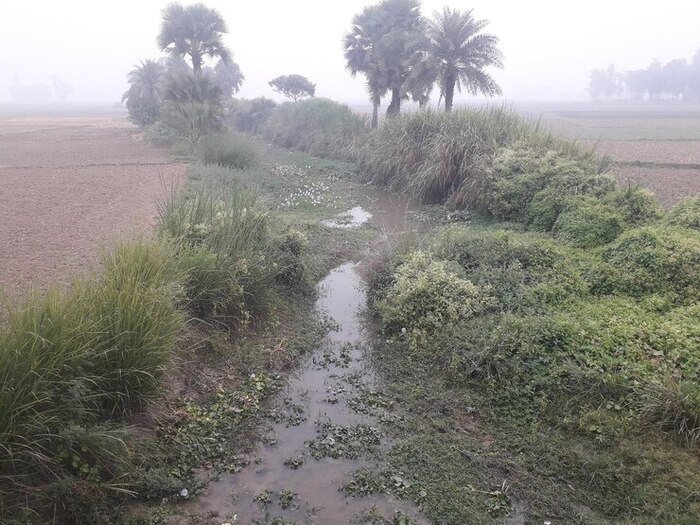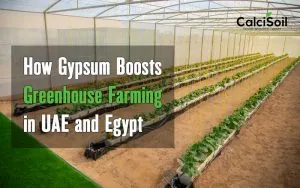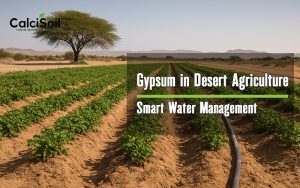
When and How to Apply Gypsum in Hot Dry Regions
Understanding the Climate Challenge
Farming in hot arid regions like the UAE, Egypt, and Saudi Arabia comes with one central challenge — water scarcity and soil degradation. These areas face high evaporation rates, saline irrigation water, and low organic matter. As a result, the timing of soil amendments like agricultural gypsum becomes critical. Applying gypsum at the wrong time can limit its effectiveness, while strategic timing—aligned with rainfall and irrigation cycles—can dramatically improve soil structure, nutrient balance, and water-use efficiency.
Why Timing Matters in Arid Climates
Unlike temperate regions where soil moisture is consistent, hot deserts experience long dry periods punctuated by short bursts of rain. Gypsum fertilizer works best when there is enough moisture to move calcium and sulfur into the root zone. If applied during peak heat or before dry spells, gypsum may sit on the surface, providing little benefit. Applying it before or during seasonal rainfall ensures that the gypsum dissolves effectively, improving soil aggregation and displacing excess sodium in saline soils.
Read the article “Gypsum in desert agriculture“.
Seasonal Rainfall Patterns in Hot Regions

In the Arabian Peninsula and North Africa, rainfall typically occurs between November and March, though intensity and duration vary. Farmers should take advantage of the first significant rain events of the season to apply gypsum. This timing allows rainwater to carry dissolved calcium deeper into the soil profile, enhancing infiltration and promoting root health. Applying gypsum too late—after the rains—reduces efficiency since the soil quickly dries out again, slowing gypsum movement.
Best Time to Apply Gypsum Based on Region
- Persian Gulf Countries (UAE, Oman, Saudi Arabia): Apply gypsum in late October to early December, before the onset of winter rains.
- Egypt and North Africa: The best application window is November to February, when moderate rains occur and soil temperatures are lower.
- Semi-Arid Zones (e.g., Jordan, Morocco): Gypsum can be applied at the end of the rainy season when soils are still moist but not waterlogged.
This seasonal awareness ensures the gypsum fertilizer reacts optimally with soil moisture, improving both immediate and long-term results.
How Gypsum Interacts with Water
Gypsum is only effective when it dissolves in water. Once calcium sulfate dihydrate comes into contact with moisture, calcium replaces sodium on soil particles, allowing salts to leach deeper and improving structure. Without sufficient moisture, this reaction slows down or stops entirely. Therefore, applying gypsum when rainfall or irrigation water is available guarantees better ion exchange, improved root zone conditions, and higher water retention capacity.
Integrating Gypsum with Irrigation Systems
In regions with limited or unreliable rainfall, farmers can coordinate gypsum application with irrigation cycles. Applying gypsum just before major irrigation events helps distribute it evenly and dissolve faster. In drip irrigation systems, gypsum can also be dissolved in water through injection units (fertigation), ensuring uniform delivery across the field. This approach reduces waste, increases efficiency, and supports continuous improvement of soil structure throughout the growing season.

Signs You Applied at the Right Time
You can tell your timing was right if you notice:
- Improved water infiltration after rainfall or irrigation.
- Reduced crusting and compaction.
- Healthier root growth and deeper rooting depth.
- Lower visible salt deposits on the soil surface.
Within one or two seasons, properly timed gypsum applications often translate into measurable yield gains and better soil texture.
Long-Term Soil Health Benefits
When gypsum application follows natural rainfall rhythms, it doesn’t just improve one season’s crop—it rebuilds soil resilience. Regular, well-timed applications lead to better cation exchange capacity (CEC), balanced nutrient availability, and less salinity buildup. Over the years, soils treated during optimal periods retain more moisture, require less irrigation, and support stronger microbial life—key indicators of sustainable agriculture in arid regions.
Conclusion
In hot, dry environments, success with gypsum fertilizer isn’t just about how much you apply—it’s about when you apply it. Aligning gypsum applications with seasonal rainfall or major irrigation cycles maximizes its benefits, reduces waste, and enhances both soil and crop performance. By respecting nature’s timing, farmers can turn harsh, dry soils into fertile and productive land—one well-timed application at a time.







